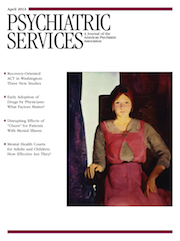The Routledge Handbook of Deviant Behavior
The concept of deviation implies identifiable norms and values against which behavior is defined as pathological. In this comprehensive but compact work, editor Clifton D. Bryant (1932–2010), sociologist and professor emeritus at Virginia Tech University, presents an array of topics that explore fundamental debates surrounding the social definitions of normality and abnormality. This is a manageably sized reference work that provides a coherent introduction to a surprisingly wide range of phenomena.
The volume begins by outlining several definitions of deviance. After succinct summaries of quantitative, qualitative, and historical methods, a section on theories of deviance examines the conceptual approaches that have most strongly influenced research in this field. Authors then describe the process of becoming deviant and the maintenance of deviant lifestyles and deviant subcultures. Readers will find astonishing statements such as, “Everyday life can be conceptualized as a behavioral cafeteria—everyone can pick according to their whims, inclinations, and idiosyncratic persuasions.” This dimensional approach is thought provoking, examining social practices that range from clear pathology to variations on normality that encompass shifting degrees of deviation. The perspective suggests an account of normative behavior as adherence to nondeviance.
The remainder of the book outlines specific behavioral phenomena, ranging from vegetarianism to sexual behaviors to serious crime. Deviant family processes, political deviance, workplace behaviors, and sports and leisure are addressed in separate chapters under a section titled Deviance in Social Institutions. Traditional criminal deviance is also examined, and these chapters generally provide a useful overview of criminological research regarding each category of offense.
Strengths of the book include discussions of historical background and the contextualization of deviance as an emerging process with contemporary manifestations. The chapters are inconsistent, however, in the historical analysis that they offer, despite the highlighting of historical methods earlier in the book. Some authors provide an international perspective, with cross-cultural comparisons of deviant phenomena, but analyses of cultural difference are not emphasized. The scholarship remains centered on English-language works and briefly acknowledges other traditions. The article on arson will serve mental health professionals well as a guide to criminal justice data on fire setting, but it does not provide a comprehensive overview of psychological and psychiatric factors. The book therefore may be a useful starting place when seeking a critical introduction to phenomena in social deviance but should prompt further exploration.
Readers of Psychiatric Services will naturally gravitate to chapters on mental illness and negative behavioral outcomes, such as suicide, self-injury, violence, and substance abuse. These chapters are valuable for their ability to situate topics familiar to mental health professionals within the larger theoretical schema in this sociologically complex domain. Of particular note is the thoughtfully argued chapter by Phelan and Link outlining major findings of their research program on stigma and mental illness. Overall, the volume provides a refreshingly different perspective on social phenomena that often intersect with health care, and it stimulates questions regarding how or under what circumstances deviance becomes medicalized. Perspectives on new forms of deviance, particularly in cyberspace, will encourage mental health professionals to reflect on the social and subjective meanings of contemporary behaviors with a sociologically informed point of view.



